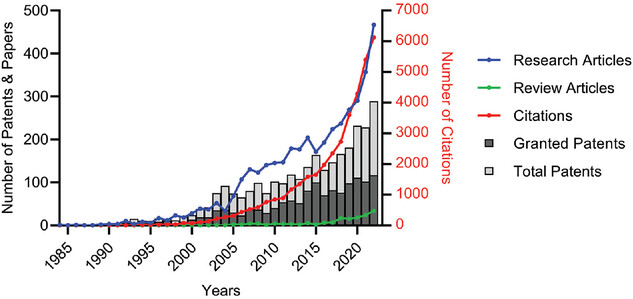Enhanced Flexible Mold Lifetime for Roll‐to‐Roll Scaled‐Up Manufacturing of Adhesive Complex Microstructures
Bioinspired Microstructured Adhesives with Facile and Fast Switchability for Part Manipulation in Dry and Wet Conditions
Smart Materials for manipulation and actuation of small-scale structures
3D nanofabrication of various materials for advanced multifunctional microrobots
Liquid Crystal Mesophase of Supercooled Liquid Gallium And Eutectic Gallium–Indium
Machine Learning-Based Pull-off and Shear Optimal Adhesive Microstructures
Information entropy to detect order in self-organizing systems
Individual and collective manipulation of multifunctional bimodal droplets in three dimensions
Microrobot collectives with reconfigurable morphologies and functions
Self-organization in heterogeneous and non-reciprocal regime
Biomimetic Emulsion Systems
Giant Unilamellar Vesicles for Designing Cell-like Microrobots
Bioinspired self-assembled colloidal collectives drifting in three dimensions underwater
Technology Transfer

The journey of magnetic small-scale robotics from laboratory conception to clinical application represents a critical frontier in biomedical innovation. Our department has strategically positioned itself at the forefront of this transformative field, with a robust intellectual property portfolio comprising 17 issued patents and 24 additional patent applications. This comprehensive patent landscape not only protects our groundbreaking technological developments but also provides a solid foundation for potential commercial translation of our magnetic microrobotic technologies. We are also happy to host three start-ups, CELLnROLL, MachOptima, and EndoSurge, which are spin-offs of our translational research on small-scale wireless biomedical robotics.
Our translational approach focuses on bridging the gap between sophisticated laboratory prototypes and practical clinical interventions. By developing magnetic microrobots capable of precise navigation through complex physiological environments, we are addressing critical challenges in minimally invasive medical procedures. Our research has systematically explored multiple application domains, including targeted drug delivery, microsurgical interventions, and diagnostic navigation. Each approach is meticulously designed to meet stringent medical regulatory requirements and demonstrate clear clinical utility.
To accelerate our clinical translation efforts, we have an emphasis on start-up culture in our department; these start-ups act as critical conduits between academic research and commercial medical technologies. While our three startups are not closely connected with our research, they demonstrated their entrepreneurship abilities by navigating the complex regulatory landscape, securing additional funding, and developing commercialization strategies for viable products in their targeted markets. By combining rigorous scientific methodology with entrepreneurial vision, we are advancing scientific knowledge and actively creating pathways for these innovative technologies to transform patient care and robotic technologies. Each start-up has its own unique focus: While CELLnROLL targets fast, affordable, and precise cancer diagnostics, MachOptima focuses on artificial intelligent-driven process optimization, and EndoSurge focuses on magnetic resonance imaging-driven robotic cardiac catheters.